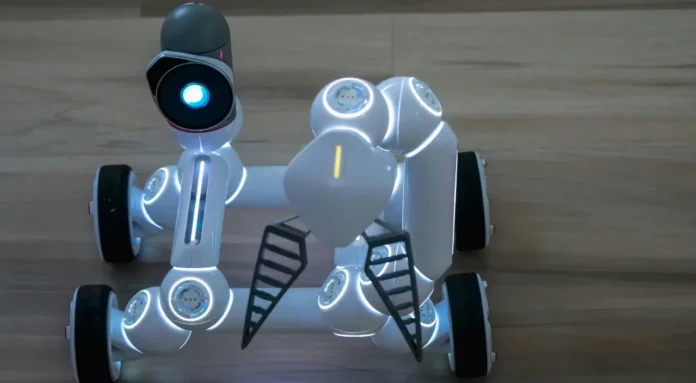Home automation technology is getting more popular. Many homeowners are adding smart devices and systems. The global smart home market was worth about $80 billion in 2022.
You can control and check on devices and systems from anywhere. This makes life easier, more comfortable, and saves energy. Smart versions of almost every home device exist, controlled through apps on your phone.
Thinking about making your home smarter? Look into the benefits and features of home automation technology. You can link it with devices like smart bulbs and thermostats. This way, you can build a smart home system that fits your needs.
Key Takeaways
- Home automation technology is on the rise, with a global market size of approximately $80 billion in 2022.
- Smart home devices, such as the TP-Link Tapo C120, can capture motion-triggered video and send intelligent alerts.
- Home automation technology systems can be controlled via smartphone apps, allowing for greater convenience and energy efficiency.
- Smart speakers, such as Amazon Alexa, can integrate with a range of smart home devices, making it easy to control your home.
- Home automation technology can help reduce energy costs, with some studies citing a reduction of 12% savings in energy costs with automated thermostatic controls.
- Home automation technology can provide long-term financial benefits for homeowners, with the global smart home market expected to grow at a CAGR of 27.1% from 2023 to 2030.
- Smart home solutions, such as the Ecobee Smart Thermostat Premium, can optimize energy use and provide remote sensors for temperature consistency.
Understanding Modern Home Automation Technology
Exploring smart home automation means diving into the latest tech. It’s about linking different devices and systems for easy control and monitoring. This field has grown a lot, thanks to better sensors, controllers, and hubs. About 55% of people worry about their smart home’s security.
More people are getting into smart home tech, with the market set to hit $174 billion by 2025. It’s all about making life easier and saving energy. For example, smart thermostats can cut energy bills by 10-15% yearly. Smart lights can even save up to 30% on electricity.
What Defines Smart Home Technology
Smart home tech lets you control and watch over your home easily. It includes things like smart thermostats, security cameras, and lights. Around 69% of homeowners have at least one smart device.
The Evolution of Home Automation
Home automation technology has grown thanks to new tech like sensors and hubs. Wireless tech like Wi-Fi, Zigbee, and Z-Wave are big in smart homes, with Wi-Fi leading the way. Over 700 million smart devices are set to be used worldwide by 2024.
Key Components of Modern Systems
Modern smart homes rely on hubs, controllers, and sensors. These parts make controlling and watching your home easy. Big names like Amazon, Apple, and Google are backing the Matter protocol to make devices work better together. Knowing about these parts is key to a great smart home experience.
Benefits of Smart Home Integration
Homeowners can now control and monitor devices and systems from anywhere. This makes living more comfortable and secure. Smart home systems bring many advantages, like more convenience, saving energy, and better security. The global smart home market is expected to hit $174 billion by 2025.
Smart home tech adoption is growing fast. It includes devices that can cut energy use by up to 30%. This helps lower utility bills.
Some key benefits of smart home integration are:
- Remote management for more convenience and peace of mind
- Energy savings and lower bills with smart thermostats and lights
- Better home security with smart locks and cameras
- Improved air quality with smart air purifiers and thermostats
Automating a four-bedroom home can cost up to $15,000. But, it’s worth it for the long-term savings and higher property value. Smart homes can see a 20% increase in value after installation. Smart lights can cut energy bills by 50% compared to old bulbs.
| Smart Home Device | Energy Savings | Cost Savings |
|---|---|---|
| Smart Thermostats | 10-15% on heating and cooling costs | $100-$300 per year |
| Smart Lighting | 40% compared to traditional lighting systems | $50-$100 per year |
| Smart Home Automation | 20-30% on energy consumption | $200-$500 per year |
Smart home integration offers many benefits. It makes life easier, saves energy, and boosts security. Homeowners can enjoy a more comfortable and secure home with these solutions.
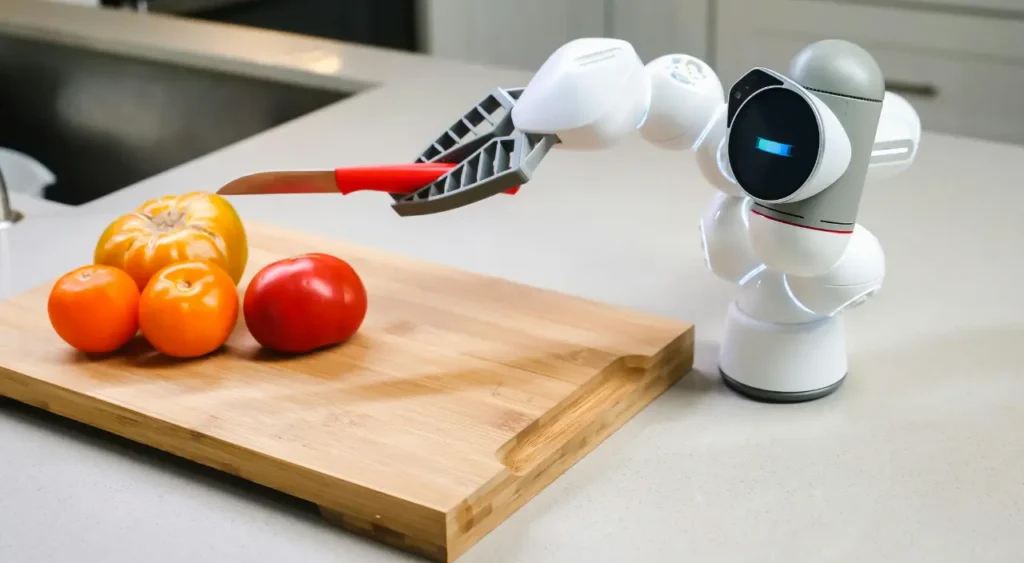
Essential Components of a Smart Home System
Creating a smart home involves several key parts, like smart hubs, sensors, and connected appliances. Home automation companies provide solutions that integrate these into one system. This makes it easier to manage and watch over your home. With these devices, you get more convenience, save energy, and boost security.
A smart home system has a few main parts:
- Smart hubs, which act as the main controller
- Sensors and detectors, which give updates on temperature, humidity, and movement
- Connected appliances, which you can control and check on from afar
- Security devices, like cameras and door locks, for better safety
Studies show homes with smart lighting can save up to $2,000 in five years. Smart heating can cut energy bills by 15%. A smart home system offers big energy savings, more convenience, and better security. It’s a smart choice for homeowners.
| Component | Benefits |
|---|---|
| Smart Hubs | Central control unit, easy integration with other devices |
| Sensors and Detectors | Real-time data on temperature, humidity, and motion |
| Connected Appliances | Remote control and monitoring, energy efficiency |
| Security Devices | Enhanced security, remote monitoring, and alerts |
Creating Your Home Automation Strategy
To make a good home automation technology plan, you need to think about what you want and need. Look at your budget, how much you can grow, and if it works with what you already have. You should check out different smart home options and systems.
When picking devices and systems, make sure they work with popular brands. For example, Google Home can control lights, cameras, TVs, and more with just your voice. Also, think about how much you want to customize your setup. Some smart hubs, like Samsung SmartThings and Wink, offer more advanced features.
Choosing the right smart hub is crucial. You might start with a smart speaker like Google Home or Amazon Echo. But for more complex setups, you’ll need a dedicated hub. The choice depends on what you already have at home.
Smart home tech is getting more popular. It’s expected to grow from 35% of U.S. homes in 2023 to 70% by 2025. People using smart tech see a 30% drop in energy use thanks to smart thermostats and lights.
Some important things to think about for your plan include:
- Checking if your current stuff works with new smart tech
- Deciding how much control you want over your home
- Looking at the cost of setting up and keeping your system running
- Learning about home automation protocols like Z-Wave and Zigbee, which support thousands of products
By looking at these points and the latest in home automation technology, you can make a plan that fits your needs. This will make your smart home better and more efficient.
Smart Lighting and Energy Management
Exploring smart home automation means looking at smart lighting and energy management. These aspects make your home more efficient and convenient. Smart lighting adjusts brightness based on time or if you’re home, saving energy. Smart thermostats also help, cutting down HVAC energy use by 10-15%.
Smart lighting and energy management offer many benefits. For example:
- Automated lighting controls adjust brightness based on when you’re home and the time.
- Smart thermostats optimize heating and cooling for better energy use.
- Energy monitoring systems show how much energy you use in real-time.
Using these smart home solutions can save a lot of energy. Smart lighting can cut energy use by up to 60% compared to old lighting. Smart home tech can also reduce energy use by 10-30% in homes.
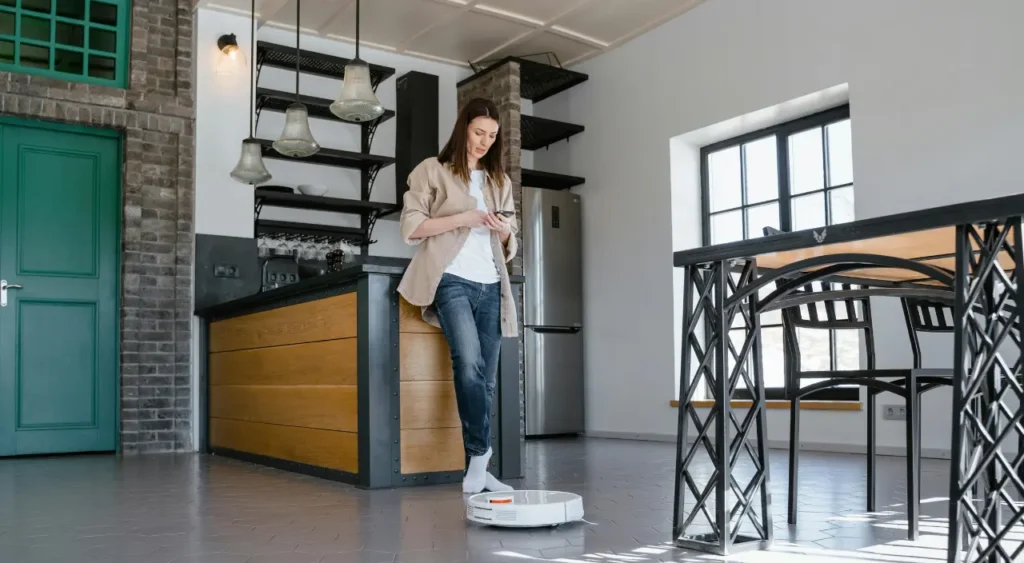
When choosing smart home automation, find products that work well with your current systems. This way, you get a complete and efficient smart home. With the right tech, you’ll save energy and money on bills.
Security and Safety Features
Home automation focuses a lot on security and safety. Companies offer many solutions like door sensors, motion detectors, and cameras. These devices send alerts and monitor your home in real-time.
They can even connect to emergency services like police and fire departments. This means help can arrive quickly if needed.
Creating a full security system is easy with smart cameras, sensors, and locks. You can watch and control your home from anywhere. Geofencing lets you set virtual boundaries that control your system when you’re near or far.
Smart devices can also work with lights to make it look like someone’s home. This can scare off burglars when you’re not there.
Studies show homes with security systems are much safer. They’re 300% less likely to be burglarized than those without. Also, 70% of smart home users feel safer with these features.
Here are some important stats about home security and automation:
| Statistic | Value |
|---|---|
| Reduction in energy consumption through automated controls | 15% to 30% |
| Percentage of homeowners who prioritize security technology | 43% |
| Year-over-year growth of voice-controlled smart home devices | 35% |
Getting a smart home security system makes your home safe. Home automation companies and devices give you peace of mind and protect you from dangers.
Entertainment and Media Integration
Exploring home automation technology means looking at entertainment and media integration. Smart home solutions let you control your entertainment easily. This makes your home more enjoyable and convenient.
A home automation system can connect with your current entertainment devices. This lets you manage them all from one place.
Some key features of entertainment and media integration include:
- Multi-room audio systems, which can stream music and audio content throughout your home
- Smart TVs and streaming devices, which provide access to a wide range of entertainment content
- Voice control integration, which allows you to control your entertainment systems using voice commands, adding to the convenience and enjoyment of your smart home experience
Recent studies show 85% of people want better home connectivity for entertainment and relaxation. This demand is boosting the smart home market. The global market size was $79.16 billion in 2022 and is expected to hit $135.3 billion by 2029.
Thinking about how to integrate your entertainment and media devices is key. This will make your home more enjoyable and connected.
IoT in media and entertainment is changing how we watch content. 70% of people like streaming services that suggest shows based on their tastes. This trend is making the IoT in media and entertainment market grow. It’s expected to reach USD 27.19 billion by 2025.
By adding home automation technology to your entertainment system, you can have a more immersive experience. It will meet your unique needs and preferences.
Choosing the Right Home Automation Products
When picking home automation products, think about compatibility, budget, and future needs. Smart home tech is getting more popular, with the market expected to hit $174 billion by 2025. Brands like Amazon Alexa, Google Home, and Control4 offer features to make your home smarter.
Make sure your devices work well together for smooth integration. Amazon Alexa and Google Home are great for automating many devices. Smart speakers like Google Nest Audio and Amazon Echo make controlling your home easy.
Key Considerations for Home Automation Products
- Compatibility: Make sure your devices and systems work well together and with your home’s setup.
- Budget: Home automation technology systems vary in price, so plan your budget carefully.
- Future-proofing: Choose products and systems that can grow with new tech and trends, like energy saving and security.
By thinking about these points and picking the right products, you can make a smart home that fits your life. With the right tech and products, you’ll enjoy more convenience, security, and efficiency at home.
| Product | Features | Compatibility |
|---|---|---|
| Amazon Alexa | Extensive automation capabilities, smart speaker | Compatible with multiple devices and systems |
| Google Home | Smart speaker, central command for connected devices | Compatible with Google Nest devices and other smart home systems |
Installation and Setup Guidelines
Setting up a home automation system can be done two ways: DIY or by professionals. Companies offer many automated solutions, including devices for your home. DIY costs range from $100 to $3,000, based on complexity and device number. Professional services offer peace of mind and better integration, costing $100 to $300 for simple systems and more for advanced ones.
A strong Wi-Fi is key for smart devices, with most using 2.4 GHz. However, 5GHz is becoming more popular for its speed. When picking a system, make sure devices work with your home’s setup. This includes systems like Google Home, Amazon Alexa, or Apple HomeKit. Over 50 million US homes have video surveillance, and automation aims to boost efficiency and security.
Here are some key installation and setup points:
- Check your home’s setup and devices to decide on installation
- Pick a system that fits your devices and ecosystem
- Think about professional services for complex or high-end systems
- Make sure your Wi-Fi is strong and consider a separate network for smart devices
| System Type | Installation Cost |
|---|---|
| DIY Home Automation | $100-$3,000 |
| Professional Installation | $100-$300 (DIY systems), $1,000-$10,000 (high-end packages) |
| Lighting Control Systems | $500-$5,000 |
| HVAC Control System | $2,000-$10,000 |
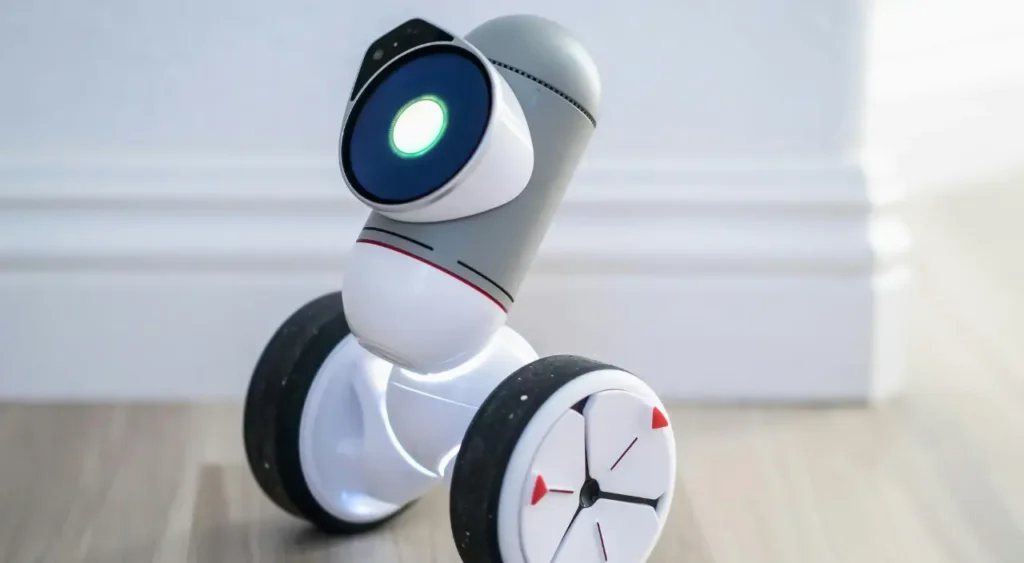
By following these tips and thinking about your options, you can set up your home automation system well. This will integrate technology and devices smoothly.
Maintaining Your Smart Home System
To keep your smart home running smoothly, regular maintenance is key. This means testing sensors and batteries every month. It also includes seasonal checks to save energy and make devices last longer. Plus, updating your system regularly helps fix security issues and boosts performance.
Keeping your home smart and secure is important. Make sure to update passwords and use strong encryption. Choosing high-quality devices ensures your system works well for a long time. Smart lights and thermostats can also help save a lot of energy.
Here are some tips for maintaining your smart home:
- Regularly clean devices like smart thermostats to prevent overheating
- Ensure a stable Wi-Fi connection for your smart home’s functionality
- Check for compatibility to avoid heating and cooling issues
- Use strong passwords and two-factor authentication for security
| Maintenance Task | Frequency | Importance |
|---|---|---|
| Software Updates | Regularly | High |
| Device Cleaning | Monthly | Medium |
| Security Audits | Quarterly | High |
By following these tips and staying up-to-date with home automation technology, your smart home will stay efficient and secure. This way, you get the most out of your smart home solutions and technology.
Advanced Home Automation Features
Exploring smart home automation reveals many advanced features. These can make your home more functional and convenient. With smart technology, you can control your devices easily, making life simpler and more comfortable.
Home automation products, like voice assistants and AI devices, help save energy. They also offer personalized suggestions.
Advanced home automation technology features bring many benefits. For example:
- They make life easier and save energy, with over 70% of people interested in smart tech.
- They improve security, with smart homes seeing a 50% drop in burglaries.
- They let you customize your home to your liking, with smart devices.
Adding smart home automation to your life can make your home more connected and efficient. The smart home market is growing fast, with a CAGR of over 25% from 2023 to 2028. When upgrading, look at different products and choose what fits your needs and budget.
Common Mistakes to Avoid
Setting up a home automation system can be tricky. Knowing common mistakes helps avoid integration errors, security issues, and budget problems. Home automation companies offer tips to steer clear of these issues. But, it’s key to understand the risks of automated home tech and connected devices.
For example, up to 30% of smart home integration failures are due to compatibility problems. This shows how important it is to pick devices that work well together.
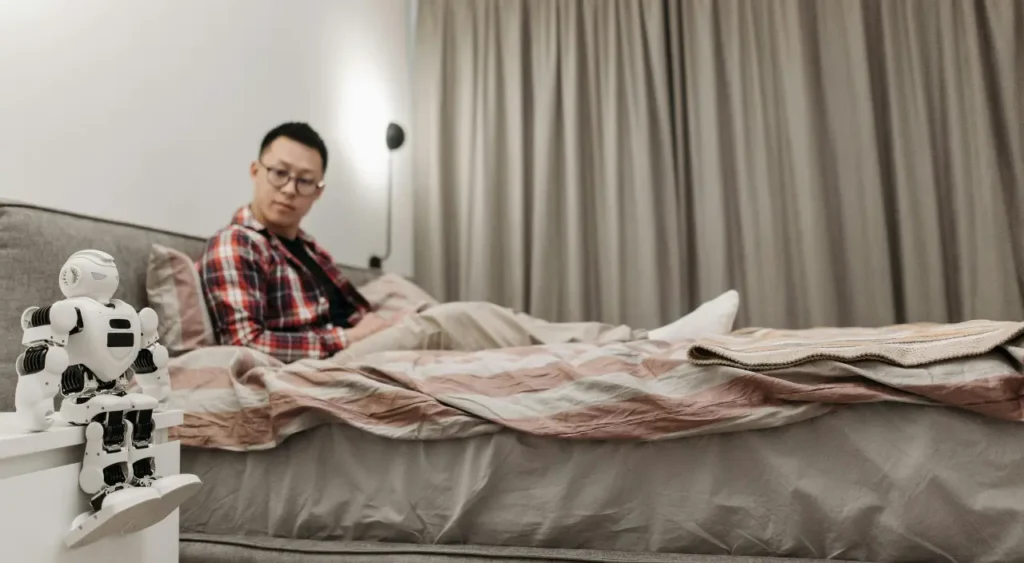
Security is another big concern. About 70% of smart home devices still use default usernames and passwords, making them vulnerable. Also, the long-term costs of smart home systems can be much higher than the initial setup, by up to 1.5 times over five years. To avoid these issues, choose compatible products, focus on security, and budget for ongoing expenses.
Integration Errors
Integration errors happen when devices from different makers don’t work together well. This can make your system less useful and frustrating. For instance, Ring’s HomeKit support was promised in 2016 but still hasn’t happened. To avoid these problems, do your homework on compatible devices and systems before buying.
Security Oversights
Ignoring security can put your home automation system at risk. About 80% of smart home devices can be hacked if not properly secured. To keep your system safe, change default passwords, use strong encryption, and update software regularly.
Budget Miscalculations
Spending more than you planned can make your smart home investment less valuable. People often buy too many smart devices, wasting money and not using them fully. To avoid this, plan for future costs and choose devices that fit your needs and budget.
Conclusion
Starting your journey to a smarter home opens up endless possibilities. The smart home market is expected to hit $174 billion by 2025, growing 26.9% from 2020. With smart lighting, you can cut energy use by 75% compared to old lights.
Smart climate control can also save up to 30% on heating and cooling costs. This shows how much you can save with these technologies.
About 45% of U.S. homes already use smart home tech. Users see a 25% boost in daily convenience. Plus, smart devices can increase your home’s value by up to 15%.
When looking into home automation, remember that looks matter. Over 50% of people want devices that fit their home’s style. Also, 60% of current users plan to upgrade in the next 5 years.
70% of people see smart homes as more comfortable and in control. This shows how much these systems can improve your life.
The IoT market for smart homes is huge, at $1.5 trillion. Smart thermostats can save up to 15% on energy by learning your habits. Smart lights can save 20% to 75% by adjusting based on use and light.
Embracing the smart home revolution can make your life better, save energy, and improve your home. The future of home automation is exciting and full of possibilities.
FAQ
What is home automation technology?
Home automation technology connects devices and systems in your home. It lets you control and monitor your home from anywhere. This makes your home more convenient, comfortable, and energy-efficient.
What are the key components of a modern home automation system?
A modern home automation system includes smart hubs, sensors, and connected appliances. It also has security devices. These parts work together for easy control and monitoring of your home.
What are the benefits of smart home integration?
Smart home integration brings many benefits. It makes your life easier, saves energy, and boosts security. You can control and monitor your home remotely, making it more comfortable and secure. It also helps lower your energy bills.
How do I create a home automation strategy?
To create a home automation strategy, first, figure out what you need and want. Then, pick the right devices and systems. Make sure they fit with your home’s setup. Think about your budget, how much you can grow, and compatibility.
What are the essential components of a smart home system?
A smart home system needs smart hubs, sensors, connected appliances, and security devices. These parts work together. They offer control, real-time data, and seamless integration of your home’s features.
How do I choose the right home automation products?
When picking home automation products, look at compatibility, budget, and future-proofing. Make sure your devices and systems work well together. Plan your budget and choose products that can grow with new technologies.
What are the common mistakes to avoid when implementing a home automation system?
Avoid common mistakes like integration errors, security oversights, and budget miscalculations. Good planning and execution are key for a smooth home automation experience.



